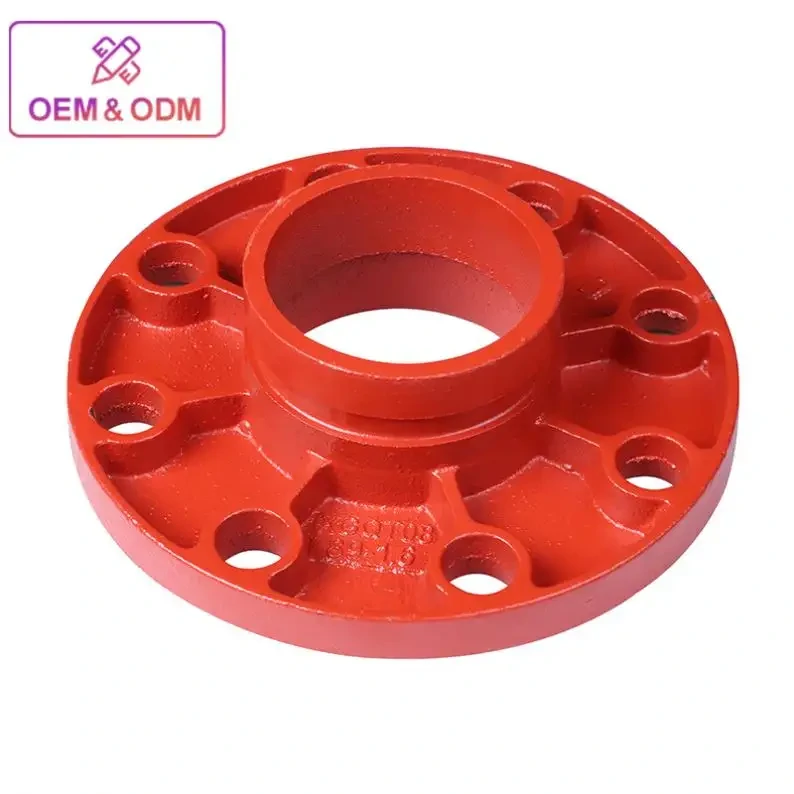The flanged ends of ductile iron pipes are specifically designed to withstand various environmental factors and external stresses within piping systems through several key design features:
- Robust Construction: Flanged ends are usually constructed with durable materials and designed to withstand mechanical stresses, ensuring they maintain their structural integrity under pressure.
- Material Selection: Ductile iron is known for its strength and resilience, making it a popular choice for pipe construction. The material’s properties enable the flanged ends to resist deformation and damage caused by external forces.
- Flange Design: Flanges are often reinforced with additional material or ribbing to enhance their strength. The design of the flanges takes into account the pressure and stress the pipes might endure, ensuring they can withstand these forces without failure.
- Corrosion Resistance: Protective coatings or linings applied to the flanged ends act as a barrier against corrosion, preventing degradation caused by exposure to environmental elements, chemicals, or moisture.
- Bolted Connection: Flanged ends typically use bolted connections to secure them to other components. Properly torqued bolts distribute stress evenly across the flange joint, enhancing its ability to withstand external forces.
- Sealing Mechanism: The gaskets used in flanged connections create a tight seal, preventing leaks and protecting the joint from external factors that could compromise its integrity.
- Compliance with Standards: Flanged ends are manufactured according to industry standards and undergo rigorous testing to ensure they meet specific pressure, temperature, and stress requirements, thereby ensuring their resilience under various conditions.
- Flexibility: While rigid, ductile iron pipes do have a certain level of flexibility, allowing them to absorb and distribute stress caused by environmental factors such as ground movement or seismic activity without failing at the flanged ends.
- Proper Installation: Correct installation procedures, flanged ductile iron pipe including aligning the flanged ends accurately and using appropriate torque during bolt tightening, are critical to ensuring the flanges can withstand stress and environmental factors effectively.
By integrating these design features and materials, the flanged ends of ductile iron pipes are engineered to endure a wide range of environmental factors and external stresses within piping systems, maintaining their functionality and structural integrity over time.
Could you elaborate on the advantages of utilizing flanged ductile iron pipes in high-pressure fluid transmission systems?
Certainly! Utilizing flanged ductile iron pipes in high-pressure fluid transmission systems offers several advantages:
- Strength and Durability: Ductile iron is renowned for its high strength and durability. In high-pressure applications, where the pipes must withstand substantial internal forces, ductile iron’s robustness ensures the pipes can handle these pressures without deformation or failure.
- Pressure Rating: Flanged ductile iron pipes are manufactured to specific pressure ratings, making them suitable for high-pressure fluid transmission. They can handle elevated pressures commonly found in water mains, industrial processes, or hydraulic systems.
- Leak Resistance: Flanged connections with properly seated gaskets provide a reliable and leak-resistant joint, crucial in high-pressure systems. The flanged design ensures a tight seal that minimizes the risk of leaks even under high pressures, maintaining system integrity.
- Corrosion Resistance: Ductile iron pipes are often coated or lined to resist corrosion. In high-pressure systems, this protection is crucial as corrosion can weaken pipes over time, compromising their ability to handle pressure.
- Adaptability and Versatility: Flanged connections offer versatility in system design. They allow for easier modification, repair, or expansion of the system compared to welded or other types of connections, making them suitable for evolving high-pressure fluid transmission setups.
- Ease of Installation: Flanged ductile iron pipes are relatively easier to install due to the bolted flange connections. This ease of installation reduces downtime during system setup or maintenance, crucial in high-pressure systems where interruptions can be costly.
- Longevity and Lifecycle Cost: Ductile iron’s durability translates to a longer service life for these pipes. Their ability to withstand high pressures over time means lower maintenance and replacement costs, making them a cost-effective choice in the long run.
- Standardization and Compatibility: Flanged connections on ductile iron pipes adhere to standardized dimensions and specifications, ensuring compatibility with various components and fittings commonly used in high-pressure fluid transmission systems.
In essence, the use of flanged ductile iron pipes in high-pressure fluid transmission systems offers a combination of strength, reliability, corrosion resistance, and ease of installation, making them a preferred choice for applications where withstanding high pressures is paramount.
